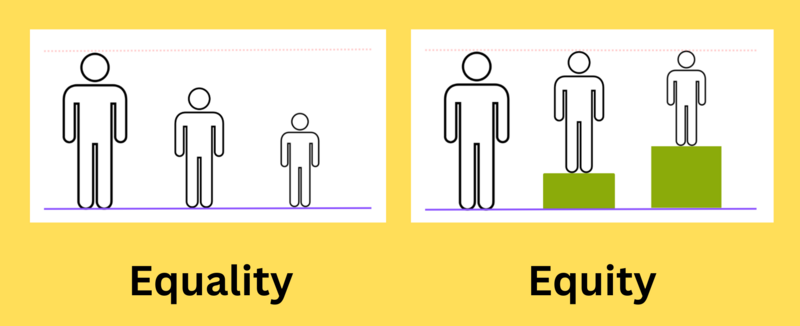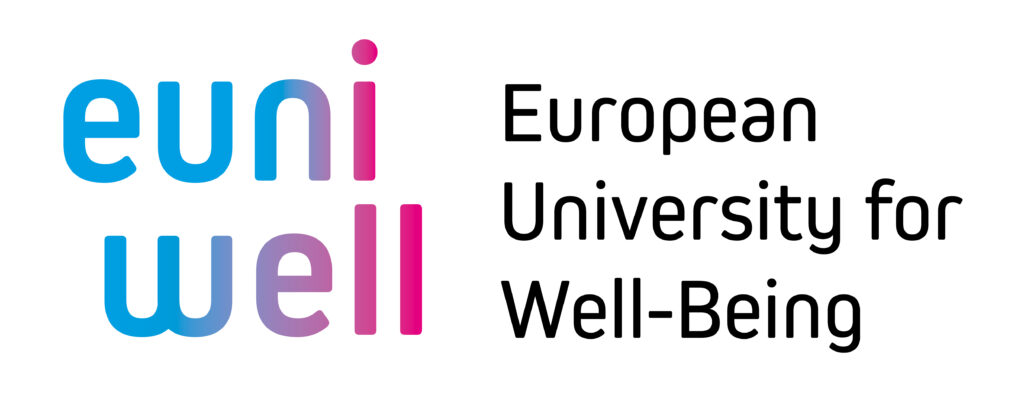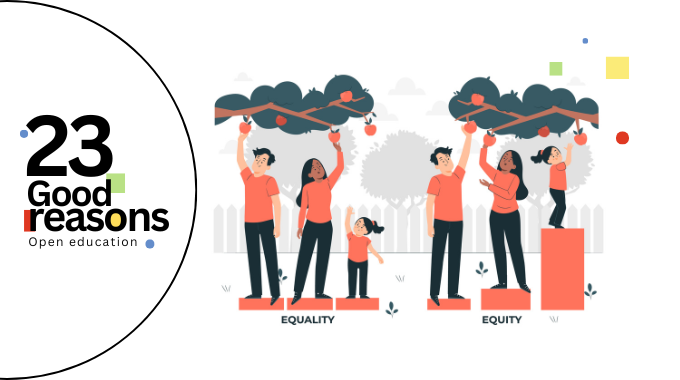Dr. Robert Farrow (MAODE, SFHEA) is a Senior Research Fellow in the Institute of Educational Technology at The Open University (UK) where he leads the research programme Learning in an Open World. He is co-director of the Global OER Graduate Network (GO-GN), an international network dedicated to supporting doctoral and postdoctoral researchers in open education; and co-editor of the Journal of Interactive Media in Education.
The Role of Openness in the Struggle for Equity in Education
Introduction
Diversity, Equity, and Inclusion (DEI) have become central to discussions about education, social justice, and institutional reform. Yet, within this framework, equity remains both the most overlooked and the most challenging to implement. While diversity can be measured in demographic terms and inclusion in terms of representation and participation, equity is harder to quantify and even harder to achieve. It requires not just access, but fair distribution of resources and opportunities in ways that address historical and structural disadvantages. Nowhere are these challenges more evident than in education, where systemic inequalities shape learning experiences and outcomes. Why is equity often reduced to forms of inclusion? Why is it so difficult to realise, and how do the principles of open education intersect with these ongoing ambitions? Here it is argued that openness must be a critical lens on existing practices.
Why Equity is Overlooked
Equity in education concerns ensuring that every individual has access to the resources, opportunities, and support necessary to achieve their full potential, regardless of their background, identity, or circumstances. Unlike equality, which would provide identical resources or opportunities to all students, equity recognizes that learners start from different positions and face varying challenges. An equitable approach accounts for systemic barriers, historical inequities, and individual needs, adjusting the allocation of resources or methods of instruction accordingly.

A common misconception is that equity is solely about ensuring access to education. While different, equity and inclusion reinforce one another. A system can be inclusive but not equitable (e.g., a diverse school where students from disadvantaged backgrounds still struggle due to lack of resources) or equitable but not inclusive (e.g., a school providing support for marginalized students but failing to create an environment where they feel valued and heard). While access is foundational, equity also involves ensuring that students have meaningful opportunities to succeed once they are in the system. This includes addressing disparities in teaching quality, curriculum relevance, extracurricular opportunities, and even basic needs like nutrition and mental health support.
Equity is fundamentally about fairness, which requires recognizing that different students face different challenges. Treating everyone the same ignores the systemic barriers that disproportionately affect marginalized groups, such as poverty, discrimination, or geographic isolation. However, “fairness” is a disputed concept, and there are competing ideas about what it means to be fair. Is it, for instance, that our political and pedagogical processes need to be “fair” (procedural justice), or do we also need to ensure that outcomes are adjusted for “fairness” (substantive justice)? It’s easy to get lost in the details of arguments like these.
A crucial reason equity is frequently overlooked is that it is ultimately more disruptive and ambitious than diversity or inclusion. Institutions can demonstrate commitment to diversity by showcasing demographic statistics, and they can promote inclusion through policies that encourage participation. But true equity requires redistributive justice, and challenges entrenched power structures, making it a more contentious issue.
Additionally, equity is difficult to define and measure. While it is relatively straightforward to track the number of students from underrepresented backgrounds in a university, measuring whether they receive adequate support, resources, and opportunities is far more complex. Equity demands systemic change, requiring a deeper critique of the ways educational and social systems reproduce privilege and disadvantage. As a result, many institutions stop at the surface level of DEI, celebrating diversity and encouraging inclusion while avoiding the uncomfortable work of structural transformation. Providing evidence to quantify equitable treatment is of course an important point of orientation, but it is essential to recognise that demands for equity are not satisfied by bringing about a temporary state of equitable treatment.
The Challenge of Achieving Educational Equity
Equity in education is particularly challenging because it requires interventions at multiple levels (policy, pedagogy, and institutional culture). Unlike diversity initiatives or inclusion efforts (which risk being symbolic), equity demands material changes in funding structures, curriculum design, and teaching practices; and also in society as a whole.
One of the biggest barriers is the resource gap between students from different socio-economic backgrounds. Affluent students have access to better-funded schools, enhanced tutoring, and a wealth of academic support systems. Socio-economic status often overlaps with characteristics like race and gender, but is not reducible to them.
Another major challenge is cultural and epistemic inequity. Legacy education systems tend to privilege dominant cultural narratives, often marginalizing indigenous knowledge, non-Western philosophies, and alternative modes of learning. Efforts toward equity must go beyond financial and infrastructural support to include curricula reform, recognising and valuing diverse traditions in knowing and learning, and offering learners curricula that reflect and respect their cultural heritage and unique experiences.
Open Education and Equity
Open education – based on principles of accessibility, sharing, and collaboration – has the potential to advance educational equity by removing financial and structural barriers to learning. Open Educational Resources (OER), for example, can mitigate disparities in access to textbooks and learning materials, particularly for students from economically disadvantaged backgrounds. Similarly, open access journals democratize knowledge production by making research available to a global audience, rather than restricting it to those who can afford expensive journal subscriptions.
Openness can be a route to improved equity, and this is a fine thing. However, open education need not be inherently equitable. While openness can ameliorate cost-based barriers, it does not automatically address issues of pedagogical equity, or wider issues about the concentration of power. Many open resources are created from a Western-centric perspective, and may reinforce existing power imbalances in knowledge production. Additionally, students and educators in under-resourced regions may lack the digital infrastructure to fully benefit from open education initiatives.
Moreover, open education challenges traditional academic gatekeeping, which can lead to resistance from institutions invested in maintaining exclusive access to knowledge. In this way, the push for equity within open education mirrors broader struggles for educational justice, requiring not just access, but intentional efforts to empower marginalized learners and diversify knowledge systems. Equity in education is an issue that stretches way beyond the classroom, and for this reason it can seem beyond the reach of educators. Open practices provide a way to extend and coordinate our reach.
Equity: Performative or Transformative?
True equity in education cannot be achieved through passive inclusion or symbolic gestures. Educational equity remains the most difficult and least addressed component of DEI because it demands structural change and the reorganisation of relations of power, both of which are difficult to measure in the short to medium term. Equity challenges institutions to confront entrenched inequalities, redistribute resources, and rethink epistemological hierarchies. While open education offers a promising pathway toward greater equity, it too must reckon with its own limitations and biases, leveraging openness as a critical lens on existing and historical practice.
This criticality is fundamental to open education approaches, which begin from the observation that existing provision is inadequate in some way. The critical perspective aligned with open forms of organisation can provide a powerful mechanism for transformation, but its full potential can only be realised when coupled with critical and philosophical perspectives that address epistemic justice, digital inclusion, and structural inequalities. Simply making resources open is insufficient. Pedagogical approaches should be structured to ensure that diverse learners can engage meaningfully, embracing universal design, democratising pedagogy and assessment. Institutions must interrogate their assumptions, founding principles, and ongoing effects on society. Countries must seek to understand their ongoing development. Embedding equity-driven frameworks into open education initiatives can move us toward a more just, participatory, and transformative educational landscape. This requires us to take up critical perspectives which challenge those with a vested interest in the status quo.
“Favour equity” by Robert Farrow is licensed under CC BY 4.0

